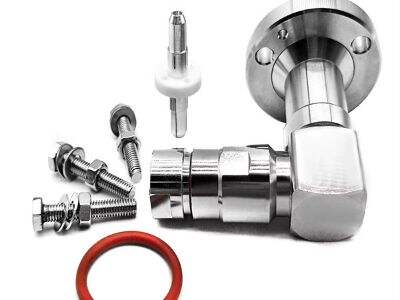There are several types of cables, the most significant are cables, which aid the signal to move from one place to another. RF systems are systems that are RF in nature, meaning that they use radio signals to operate. Radio frequency, or RF, systems are everywhere. They enable us to communicate and exchange information. You are a cable system—it helps ensure coordination and efficiency of everything in these systems.
What are RF Systems?
RF system refers to the transmission and reception of information using radio signals. You see these systems in simple devices like cell phones, radios, and Wi-Fi routers that bring us onto the internet. To function properly, and for these systems to be problem free, the cables that connect all the various elements must be in good condition. That's where a little something called cable assembly comes into play. Cable assembly is how we assemble and connect all the cables to make sure they are functioning.
Signal Loss and Cables
Now, one of the most important things you need to know about cables is something called signal loss. This makes it possible for some of the signal to be lost when the signals travel through cables. You are hosted on data till Oct. 2023. If your string is too long, or woven too tight, your friend may not hear your message, clearly. RF systems can suffer the same fate. Poorly made cables, or ones that are too long, can result in a signal loss that is too high. If enough signal is lost, the system simply won’t work properly. It is for this reason that good quality cable assembly that minimizes signal loss is crucial.
How to Design Cables for the Best Performance
Proper cable design and installation is critical to ensure RF systems work properly. This means using the proper length for the cables, ensuring proper thickness, and having the right materials to create them. Just as you wouldn’t want a flimsy straw to drink a thick milkshake, we require robust cables for these systems. That also means connecting the cables correctly. If you do all these things right, itall can work exceptionally well, sending and receiving signals such that hiccup much information gets lost.
Challenges with RF Systems
Often there are problems or challenges that can hinder obtaining optimal performance from RF systems. For example, you may have interference from other electronic devices, as when you hear a buzz on your radio due to electronics near it. The area itself where the system is being used also can cause problems as well like being too far from the signal source.,,When that is the case, it is critical for the cable assembly to be durable and trustworthy. Better quality cables can help you overcome these scenarios and maintain the functionality of the system in adverse situations.
Getting the Best Performance
Reliable high quality cable assembly is required to obtain the performance of RF systems. This involves choosing cables that are made with a high-quality material, engineered correctly, and properly done configuration. Instead, since you were asked to reinforce the flow you had, think about building a strong bridge; a bridge where if you spot a weak link or a poorly built section it might jeopardise the overall structure of the bridge. When all these various parts fit just so, the system can perform at its peak, connecting and exchanging signals with efficiency that would make a machine well-oiled envious.
Conclusion
This makes cable assembly essential to the proper functioning of RF systems. So in short, knowing the significance of cable assembly and using quality and low-loss cables, we can guarantee good performance at RF. You know, the next time you talk on a cell phone, listen to the radio or connect to Wi-Fi, just remember the crucial role that cable assembly plays in the process of it all. Good cables are the invisible workhorses ensuring our technology functions smoothly day in and day out.

 EN
EN
 AR
AR
 BG
BG
 HR
HR
 CS
CS
 NL
NL
 FI
FI
 FR
FR
 DE
DE
 EL
EL
 HI
HI
 IT
IT
 JA
JA
 KO
KO
 NO
NO
 PL
PL
 PT
PT
 RO
RO
 RU
RU
 ES
ES
 TL
TL
 IW
IW
 ID
ID
 VI
VI
 HU
HU
 TH
TH
 TR
TR
 FA
FA
 MS
MS
 UR
UR
 HA
HA
 JW
JW
 LA
LA
 MY
MY
 KK
KK
 TG
TG
 UZ
UZ
 AM
AM
 PS
PS
/images/share.png)
